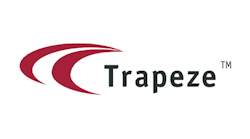In an industry riddled with programs and directives defined by anagrams like some kind of bureaucratic alphabet soup, the latest version—SGR—demands notice. The SGR (State of Good Repair) program was born out of an extensive study conducted by the Federal Transit Administration (FTA) on the relative health or ‘state’ of the nation’s transit industry. An assessment of revenue vehicles (rail, bus, and para-transit), non-revenue support vehicles, infrastructure, rail right-of-way, bus stops, rail stations and operations facilities throughout both urban and rural operators prompted the FTA to announce a $775 million grant program designed to bring the nation’s rail and bus transit systems into a State of Good Repair.
The FTA has prioritized modernizing transit infrastructure and operations and recognizes the value and necessity of focusing on both capital investment and ongoing investments in maintenance best practices. To many in the transit industry, the SGR program itself is an acknowledgement and an appreciation for the art and science of effective Enterprise Asset Management (EAM). Too often, “good repair” was something that was just presumed, an automatic function performed by an anonymous group, with inconsistent regard as to the complexity of the task and budget required to make it happen. Good repair is increasingly seen as a critical component of providing service transit customers expect while containing costs and increasing the safe use of complex assets.
An important part of the FTA study were the roundtable discussions conducted with transit operators, suppliers, and EAM vendors alike to share best practices on issues pertaining to transit infrastructure and equipment, transit asset management, and how this vital initiative can and should be implemented. With its support for SGR – both philosophical and financial – the FTA is sending a message that many organizations have been slow to acknowledge: asset maintenance is an important practice deserving the attention of a public transportation agency.
Although the primary focus of the study and the funding is infrastructure, ongoing asset and maintenance management plays a critical role in the success of the initiative. As defined in the FTA’s State of Good Repair Summit:
Asset Management is:
• Strategic and not tactical (i.e., has a long-term focus)
• Seeks to balance the competing needs of operations, maintenance, reinvestment and system expansion
• An organization wide endeavor: It seeks to integrate planning, engineering, funding, and IT perspectives
• Seeks to make informed and prioritized decisions regarding the use of scarce resources based on reliable data
Asset maintenance departments often play the role of the center on a football team’s offense: involved in every single play, but usually only noticed when something goes wrong (e.g., a bus failing in service being the “bad snap” of the analogy). The FTA’s recent funding for SGR tells transits to pay more attention to the center – it’s not glamorous work, but when it’s executed effectively, the rest of your operations are able to function as planned.
At the center of any definition of “State of Good Repair” must be two inextricably linked concepts: a work plan to ensure good repair, and a “living system” to enforce that work plan, track adherence to maintenance schedules, and provide information related to work plan effectiveness. EAM software is that system.
EAM software allows a public transportation agency several benefits regarding assets’ Good Repair: not just the “oil change” mentality of manufacturer-recommended preventive maintenance inspections and procedures, but also the tools to plan ahead – to sift through historical trends and predict issues before they happen, or to identify trends at the start. It goes beyond using software as a way to passively store digital maintenance records. Today’s EAM software is an active tool engaged in assisting transit operations to meet maintenance, operations and system-wide goals through constant analysis of key performance indicators to continuously improve maintenance operations.
AssetWorks, along with our parent company the Trapeze Group, brings over twenty-five years of in-depth Asset Management software development and deployment experience to the industry. We are uniquely positioned to help public transportation authorities utilize technology as part of the SGR initiative, as well as to improve their overall operations. With over 500 customers using our applications, including over 85 public transportation authorities, we have the experience with both the largest transit authorities and with small operators to meet SGR regulations out of the box. Our suite of Transit and Commuter Rail enterprise asset management software applications offer comprehensive functionality that addresses both the day-to-day tactical issues and long-term strategic issues that are part of this initiative, including:
- Extensive preventive maintenance (PM) tracking, including automatic notifications about vehicles and equipment that are coming due or are past due which can help transit agencies maintain their current equipment and be pro-active in maintaining new equipment
- Detailed life-cycle cost analysis based on actual maintenance history which can help transit agencies know when to dispose of a vehicle asset and with which asset to replace it
- Enterprise purchasing which allows transit agencies to consider both the capital cost and future operating expenses when making purchasing decisions
- Component Tracking which helps transit agencies to track and maintain the various components that are installed on buses and trains, including fare collectors, security systems, seats, and so forth
- Comprehensive inspection reporting using handheld devices for trains, buses, equipment, as well as for rail right-of-way assets and facilities which can help transit agencies meet FTA and FRA regulations
To some in the public transportation space, the concept of SGR may be new. But to AssetWorks and our customers, it sounds like the FTA is finally singing our tune.



